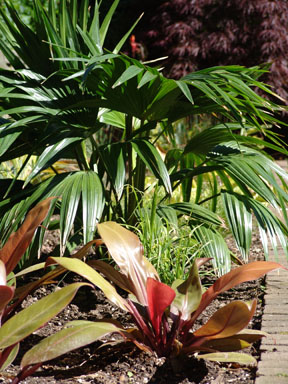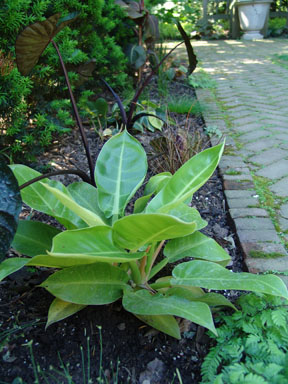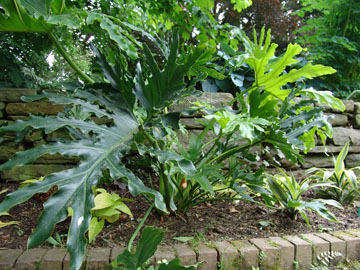Annual Monocot Border
Every year, we re-design the area below the wall and in front of the arbor in the Terry Shane Teaching Garden. These spaces were designed to display seasonal arrangements of annuals, tropicals, and tender perennials. Each year there is a different theme to the garden. In past years there have been different color designs, as well as thematic displays such as the border “Unabashedly Burle,” which featured a design akin to the works of the late Brazilian garden designer, Roberto Burle Marx. The purpose of the border is to showcase interesting tender plants designed in a provocative manner.
This years’ theme is Annual Monocot Border, designed by Rhoda Maurer. The inspiration for this botany theme came while simply flipping through catalogs and realizing that the majority of these plants were part of the monocot classification.
Monocots are one of two major groups of flowering plants, the angiosperms. Monocots are recognized by having one cotyledon (embryonic seed-leaf) in contrast to two cotyledons typical of dicots. Many monocots have leaves with parallel veination, adventitious roots, and flower petals in multiples of three.
Typical monocot borders in a temperate climate like ours are often assemblages of perennial grasses and/or agricultural grains with a few hardy aroids and bulbs. But a selection of monocots from the tropics has given us the opportunity for some colorful punctuation and has added textural contrast to the annual monocot border. To further focus the design for this year’s border, Rhoda selected monocots within the orange, red, purple, and green color families.
Her favorite monocot in this collection is Philodendron bipinnatifidum, cut-leaf philodendron. Like all philodendrons, P. bipinnatifidum does not like direct sunlight, making it ideal for the shady conditions in this part of the Terry Shane Teaching Garden. Often used as a large houseplant, P. bipinnatifidum also works well in containers. Its large, dramatic, lobed leaves create an attractive presence in any space.
To read the complete list of plants in the Annual Monocot Border, download our Annual Border brochure. Visit the Arboretum this summer to see how these plants create a dramatic display in the Terry Shane Teaching Garden.








No Comments